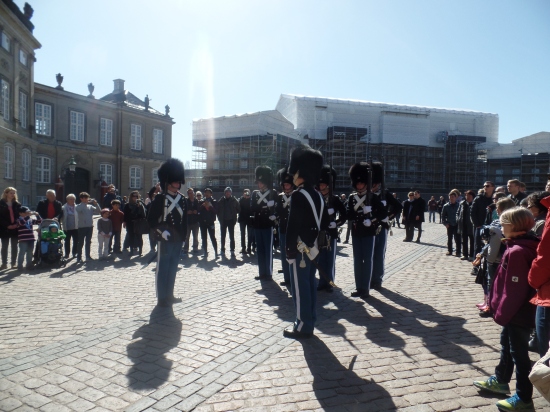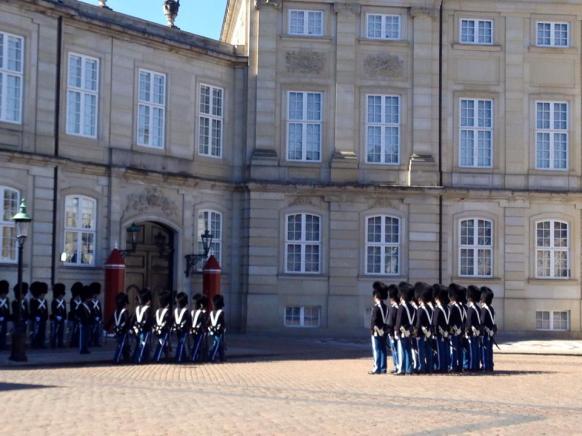A Glimpse of Amaliensborg Slotspladt in Copenhagen
When asked to name some of the most beautiful palaces in Europe, most people mention the ones that they are most familiar with. The Buckingham Palace in London, the Royal Palace in Madrid, The Schronbrunn Schloss in Vienna and Neuschwanstein Castle in Germany are some of the most famous castles people give at the top of their minds.
In a region as vast and diverse as Europe however, it is almost inevitable to miss and/or overlook some of the gems that can be found in its far reaches.
Take for example, the Amalienborg Slotsplads in Copenhagen.
Built in the early 18th century, Amalienborg is the winter home of the Danish Royal Family, situated at the heart of Copenhagen Denmark.
The complex boasts of four identical classical palace façades with rococo interiors around an octagonal courtyard.
The four buildings are
1.Christian VII’s Palace (also known as Moltke’s Palace, used as guest residence),
2. Christian VIII’s Palace (also known as Levetzau’ Palace, used as guest palace for Prince Joachim and Princess Benedikte),
3. Frederik VIII’s Palace (also known as Brockdorff’s Palace, home of the Crown Prince family), and
Christian IX’s Palace (also known as Schack’s Palace, home of the Queen and Prince Consort).
Actually, the four palaces were intended to be used by four noble families of Copenhagen but the fire at the Christiansborg Palace convinced the royal family to use Amaliensborg as their winter Palace in 1794. In return, the four great families were offered 40 years of tax immunity for their services to the Danish crown.
All palace facades sport a late Baroque, 18th century design and all facades are washed white, immaculate and stunning, catching any visitor off-guard.
The centerpiece of the complex is a grand statue of King Frederick V, attributed as the founde of Amalienborg. The statue depicts the Danish king in an equestrian pose.
According to historians and observers, Amalienborg boasts of the most spectacular example of Rococo (Late Baroque) architecture in all of Europe.
Inside the palaces are the Amalienborg museum which will give you an idea of the lavish lifestyle lived by members of Denmark’s royal family. The current Queen Margrethe’s photos and memorabilia can also be found inside the palace halls.
But Amalienborg is frequented by visitors to Copenhagen because of its famous changing of the guard ceremony.

Every day at noon, visitors can catch a glimpse of the changing of the guard.
According to the copenhagen.com, the ceremony is called “The King’s Watch” or “Kongevagt” when Her Majesty the Queen of Denmark is in residence. During this time, the guards are are accompanied by the Royal Guards music band.
The route, that starts at 11:31 at the barracks, goes: Rosenborggade, Købmagergade, Østergade, Kongens Nytorv, Bredgade, Sct. Annæ Plads, Amaliegade, and Amalienborg.
Meanwhile, it is called “The Lieutenant’s Watch” or “Lojtnantsvagt” if one of the Royal Princes is residing at the palace in the capacity of regents, and drums and flutes will be heard.
When the Crown Prince or Prince Joachim are in residence but not n the capacity of regents or when the palace has no residing member of the royal family, the guards march Copenhagen without musical accompaniment and this is called “Palaevagt” or Manor Watch.
I had the wonderful chance of experiencing the Lieutenant’s Watch during my visit to Copenhagen and I was thoroughly mesmerized by the richness of tradition still observed in this northern European country.
It was indeed one of the coolest things I have seen and experienced in Europe and if you have the chance to come visit Denmark, this item should be high on your bucket list



















an interesting destination, it would be great to get to this place
ReplyDelete-----------------------------------------------------
my site: intimateasia.it